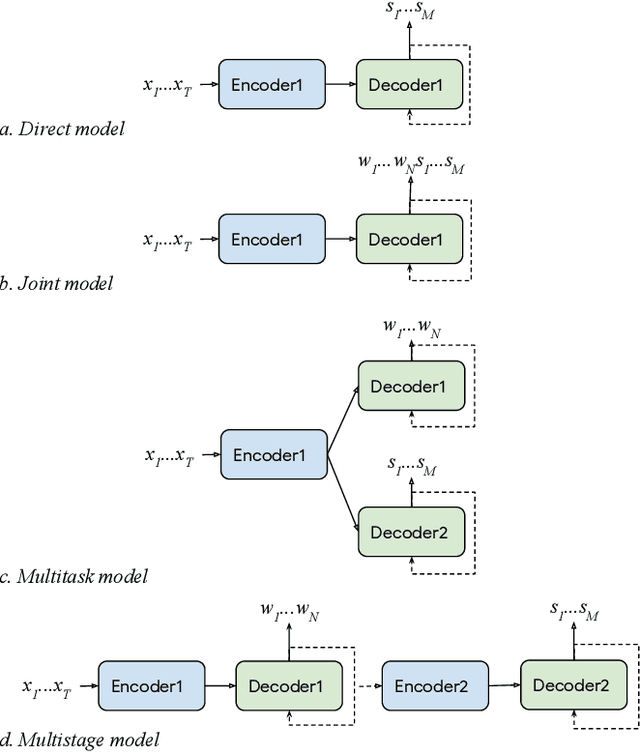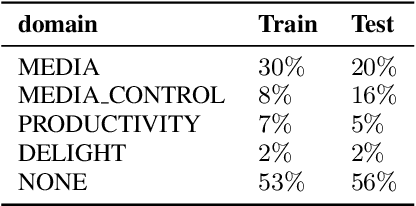From Audio to Semantics: Approaches to end-to-end spoken language understanding
Paper and Code
Sep 24, 2018



Conventional spoken language understanding systems consist of two main components: an automatic speech recognition module that converts audio to a transcript, and a natural language understanding module that transforms the resulting text (or top N hypotheses) into a set of domains, intents, and arguments. These modules are typically optimized independently. In this paper, we formulate audio to semantic understanding as a sequence-to-sequence problem [1]. We propose and compare various encoder-decoder based approaches that optimize both modules jointly, in an end-to-end manner. Evaluations on a real-world task show that 1) having an intermediate text representation is crucial for the quality of the predicted semantics, especially the intent arguments and 2) jointly optimizing the full system improves overall accuracy of prediction. Compared to independently trained models, our best jointly trained model achieves similar domain and intent prediction F1 scores, but improves argument word error rate by 18% relative.
 Add to Chrome
Add to Chrome Add to Firefox
Add to Firefox Add to Edge
Add to Edge